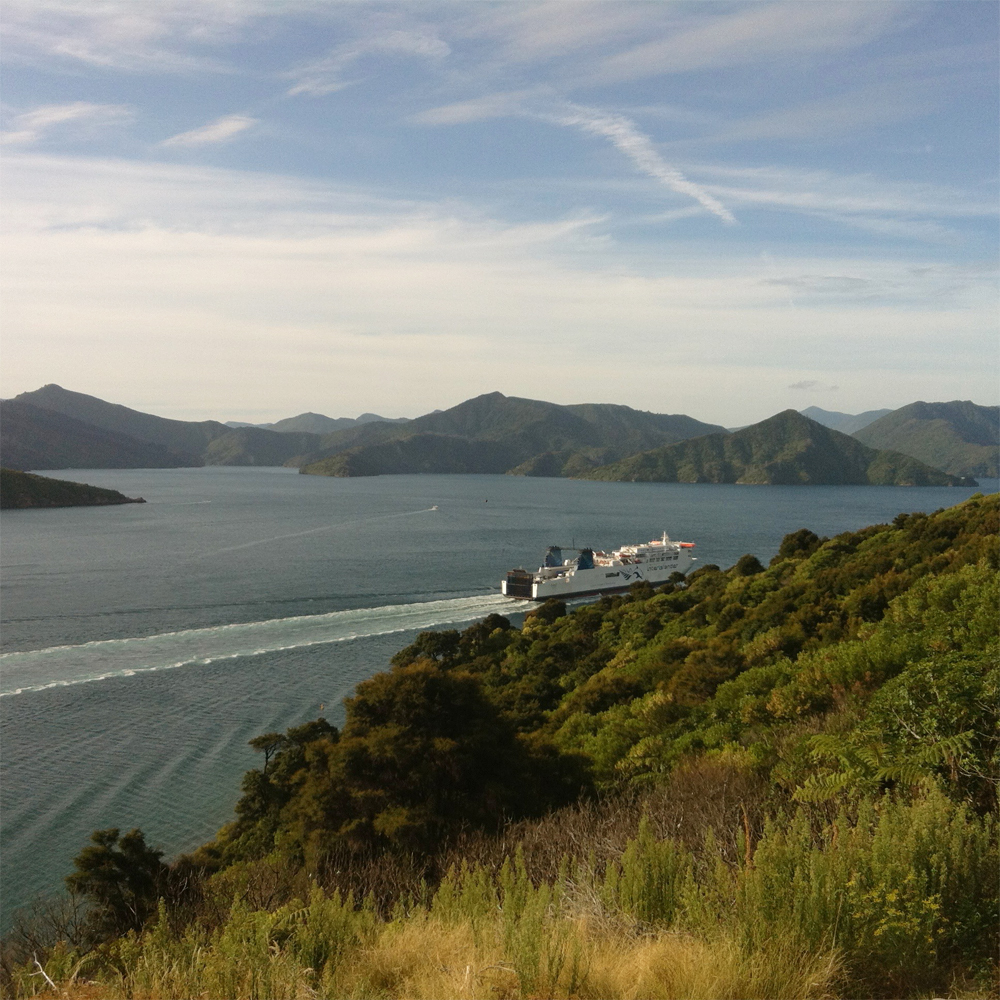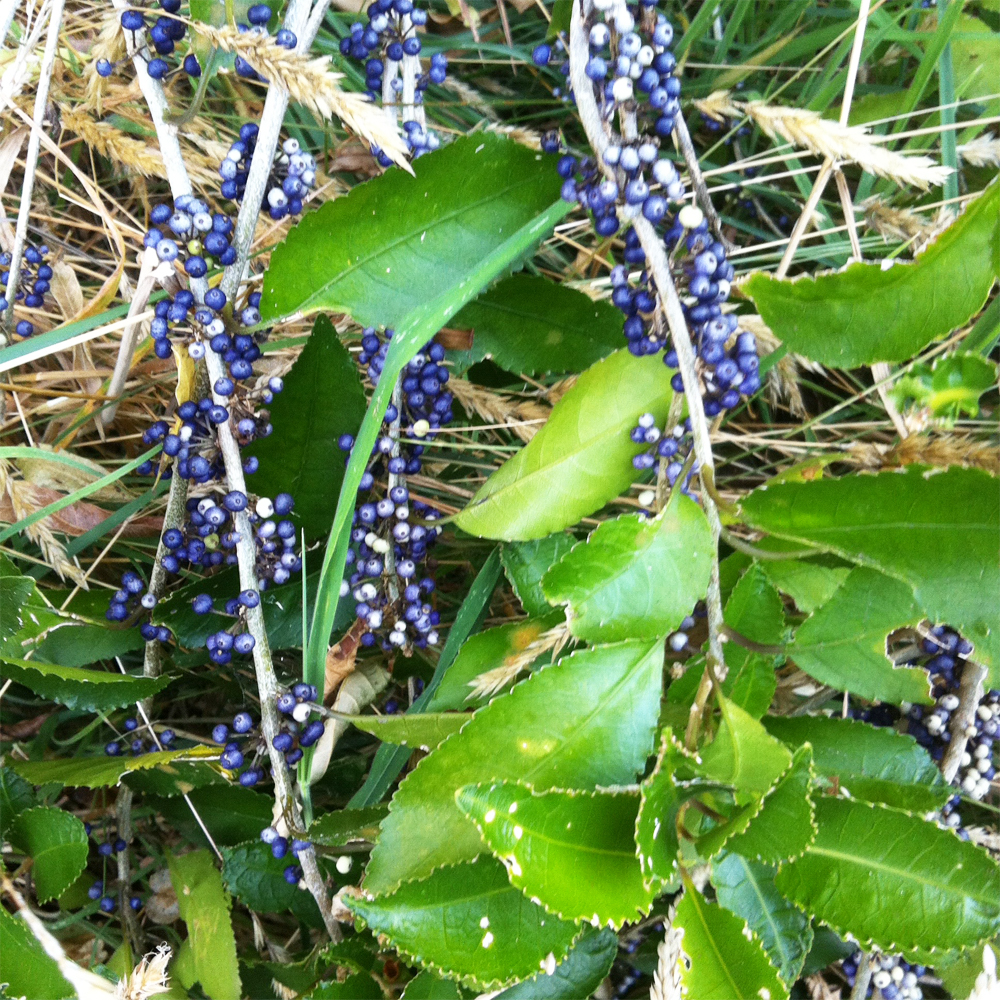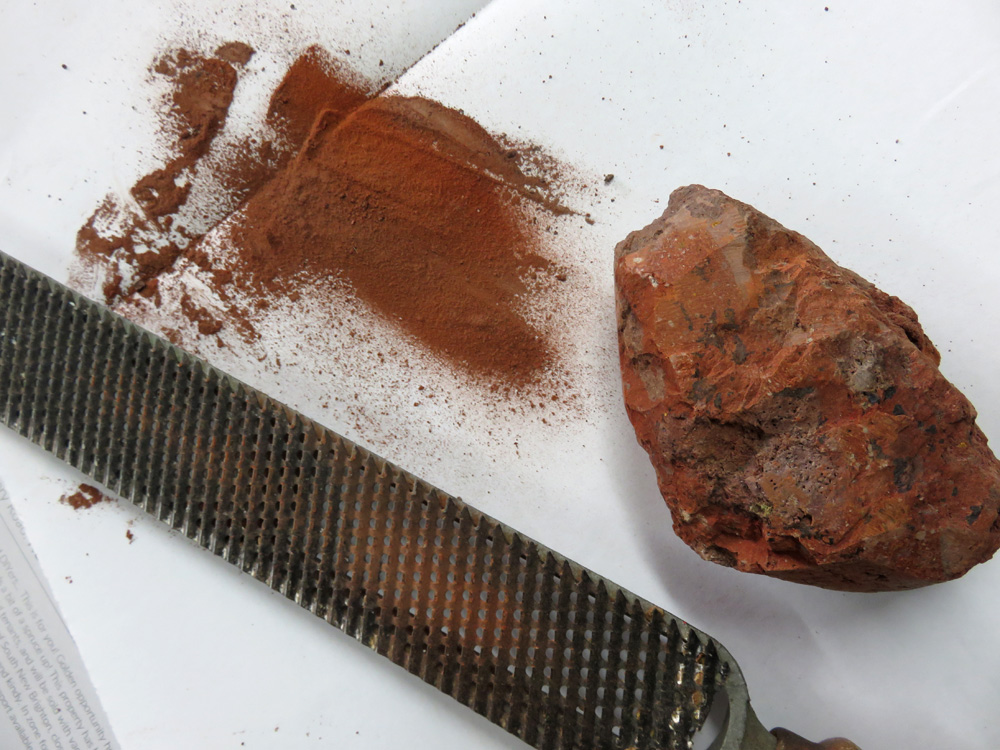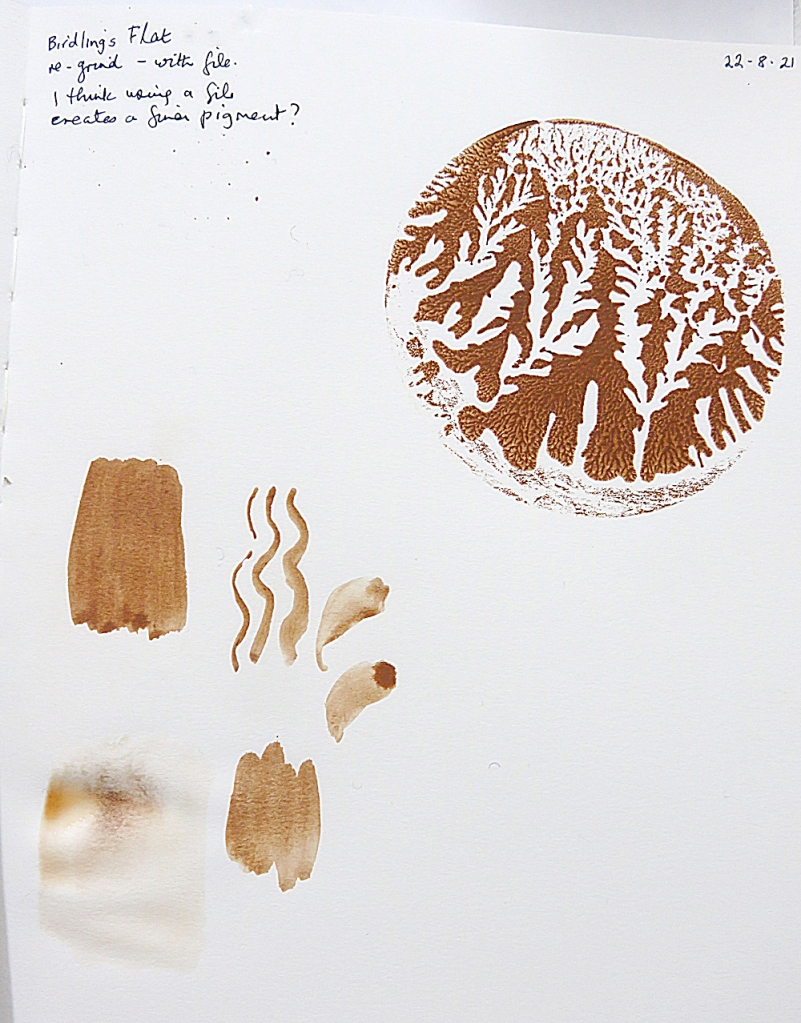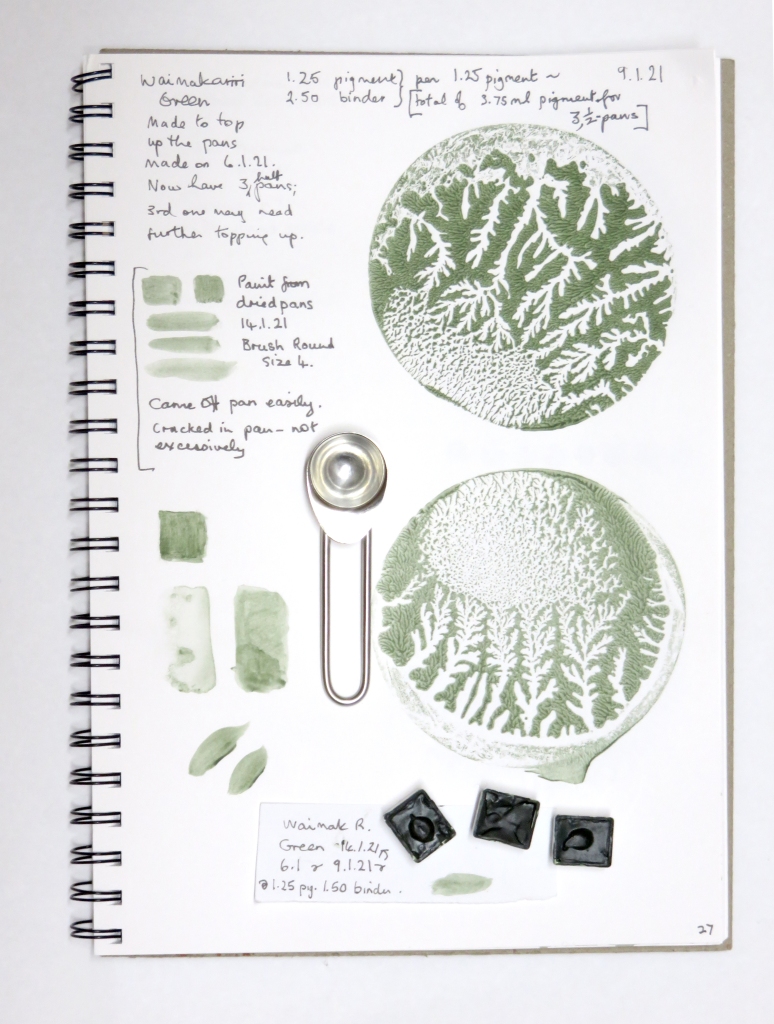Waikawa Bay is near Waitohi/Picton on Queen Charlotte Sound, and they are connected by a track through the Victoria Domain Park. There are other tracks in the Domain and you can walk to end of the peninsula; The Snout. We tried most of these three tracks and here are a couple of photos:
We were staying in Waikawa in February 2020, and these pigments I collected during the walks. These were three different clays and one harder rock (the red pigment). I am trying to catch up with testing these pigments. It made a relaxing task compared to working towards exhibitions!
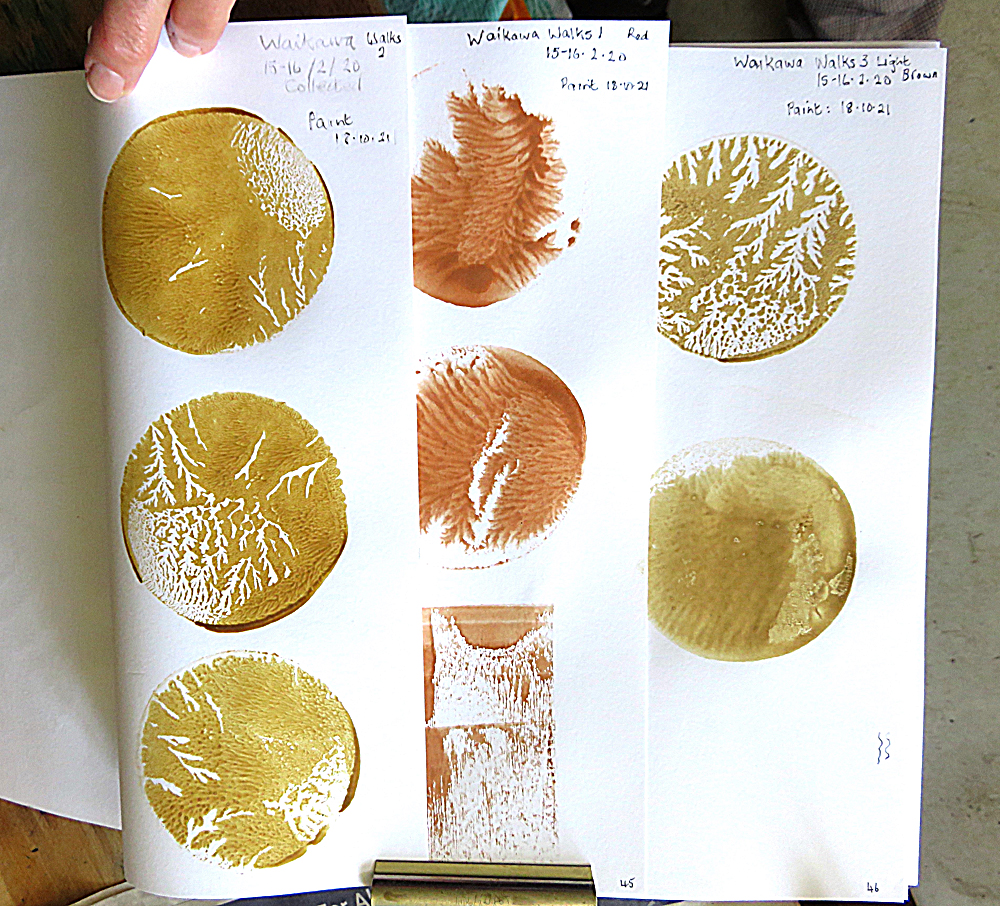
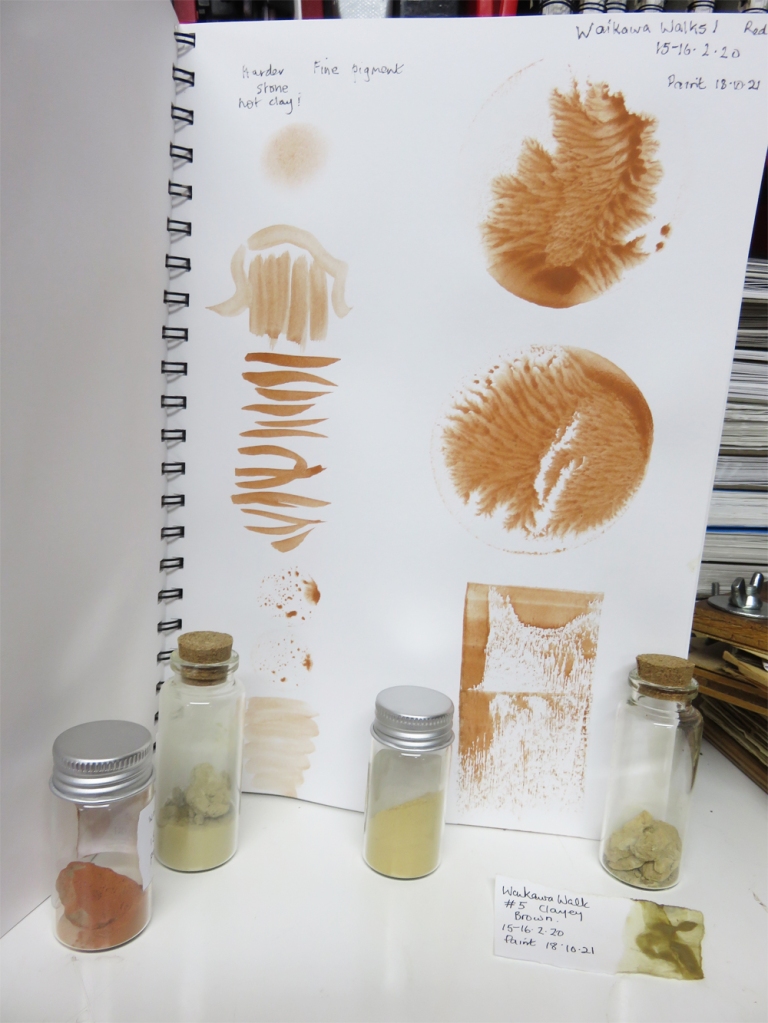
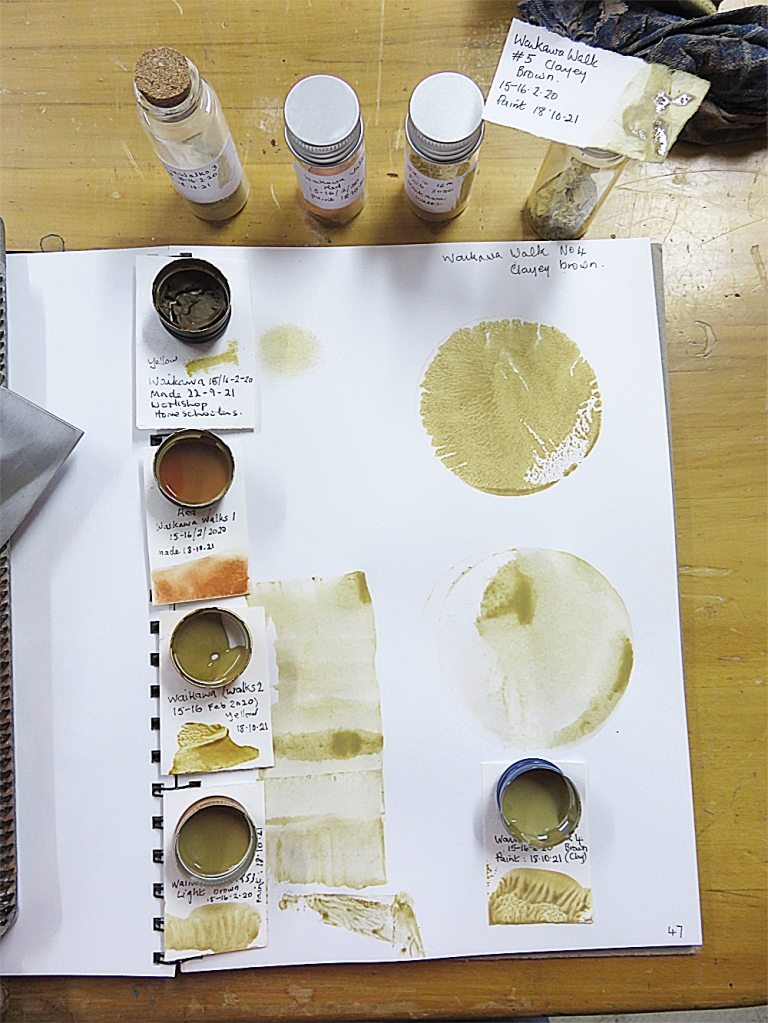
I rather like the #4 pigment, has an slight green colour to the brown. The sample “#5” in the photos above is the first paint I made at the workshop in September and is #4. Just to confuse us all. It is interesting how yellow pigments can give a variety of darker colours. After the last Workshop in September I posted images of some of the paints made. These paint tests are made with the full strength paint, so the colours are quite dark. I have watered down the red paint, and I also rub some of the pigment powder on to the test page, for the record.

